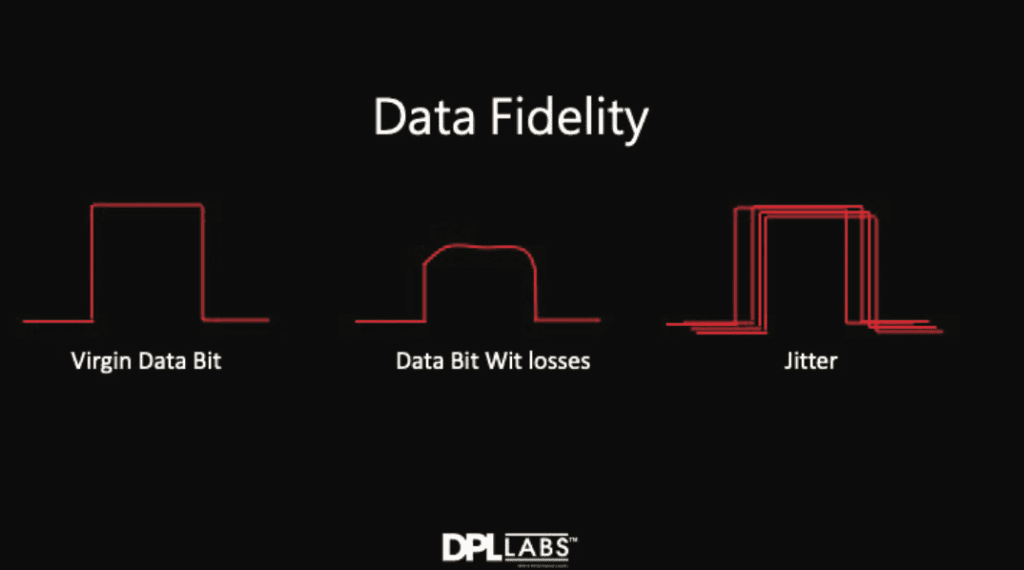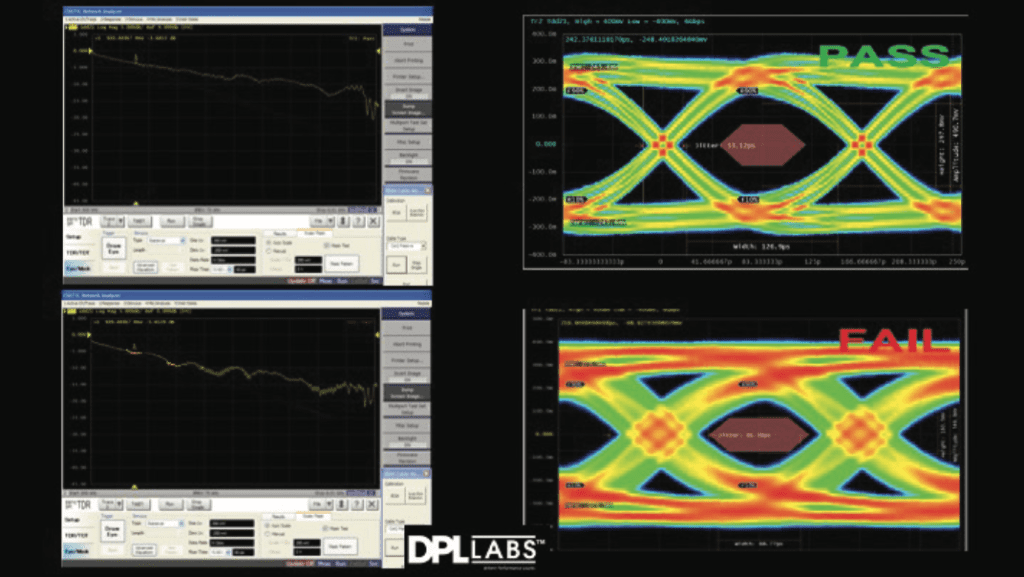To effectively test new 48G cable products still requires running them through both Frequency Domain (FD) and Time Domain (TD) test platforms. FD offers a basic point of reference data but only supports tests per frequency and not in time. The real deal is with TD measurements that provide us the much-needed Eye Diagrams historically used for any examination of digital fidelity.
Fig. 1 demonstrates what a virgin data bit looks like compared with what it would look like after some losses. The image on the far right shows how jitter is developed with multiple bits being off in time. These types of signals cannot be measured using FD.

Fig. 2 shows FD and TD with a sample cable. The top images show a good cable. Left is FD and right is TD, with everything OK here. But the lower images show a failed TD, yet the FD looks fine. If it were not for the TD test this cable would have slipped by, never working in any 48G system.

Compared with the current 18G system, this new 48G package has a lot more punch requiring a substantial increase in test procedures due to its wide operating envelope and feature sets.
For example, in the past it was only necessary to measure one data rate on three video channels. Under 48G there are five data rates — 3, 6, 8, 10 and 12Gbs — that must be tested on four overall channels driven at the same time. This increases TD measurements from three Eye Diagrams to 20.
Plus, to provide enough flexibility over such a large operating envelope, an increase of correction equalizers is installed in each display. A total of eight equalizers now operate compared to one used with 18G to provide additional support for each cable. To ensure that each cable can function over these additional requirements, each data rate must be tested with each equalizer and each channel for data fidelity using TD to generate each Eye Diagram — topping the count to 160 Eye Diagrams required! FD cannot provide any of these functions.
Active Device Challenges
Moving into active devices provides yet another new set of challenges to reduce interoperability problems. Active devices, in general, offer some form of gain that will affect how the internal correctional equalizers within each display will function. They must work in harmony for solid system performance. With gain comes noise and distortions that also must be analyzed for certain limits.
In addition, power over the bus must be monitored to not only guarantee system sustainably but also any necessary currents needed to drive active devices to their specific requirements. Since active devices interrupt each channel’s data throughput, it becomes imperative to confirm both source and sink devices can work in harmony with active devices.
As we’ve covered recently, emissions now play a big role in keeping radiated energy to absolute minimums and protecting surrounding components from these new 48G systems being installed. Under the required CISPR-32 emissions standards, radiated emissions are limited to just 6Gbps.
However, under 48G, this must be extended out to 12Gbps due to its extended data rate. No longer can near-field emission tests justify the amount of radiation subject into the environment. Now the need to extend this to far-field tests in chambers that are at least 10 meters in size become mandatory.
As you prepare for new and exciting 48G features, take the time to research or even ask each manufacturer what they are testing for — you may be surprised by what you hear

















